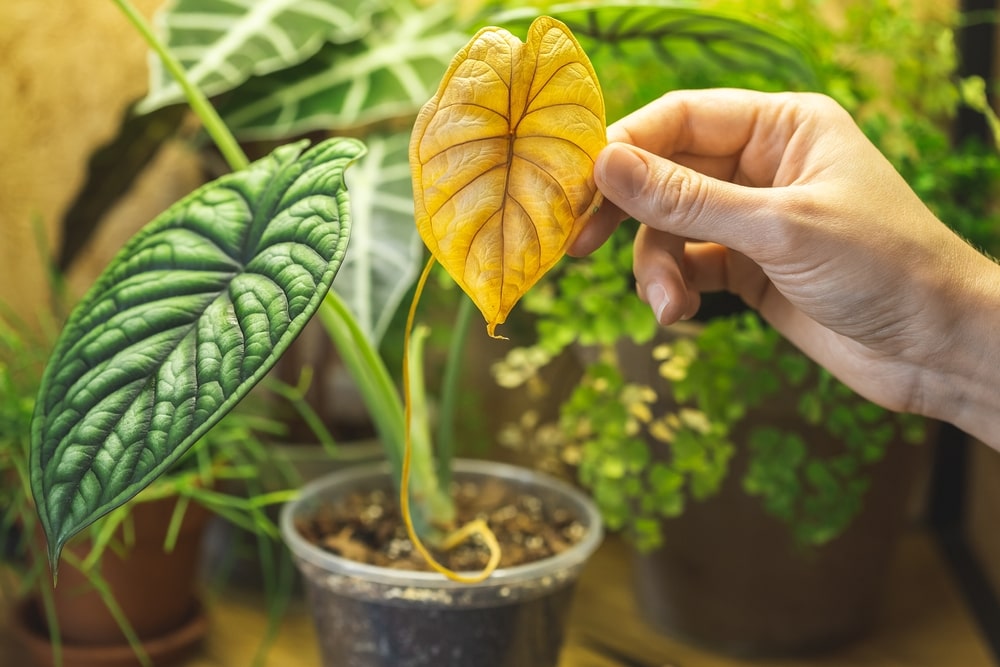Now that your houseplants have been inside for a few weeks, here are a few things to look for:
Yellow Leaves
Yellow leaves can be a sign of two very different problems. They are often a sign that light-craving plants are not getting enough light—weeping figs and citrus are famous for this. Moving to a window that gets more light should help. If this is the case, remember there’s no such thing as too much sun for citrus!
Yellow leaves can also occur if a plant has gotten too dry. A peace lily that has wilted, for example, will perk back up once you water it, but a couple of weeks later, yellow leaves may show up.
Brown Leaf Edges
Brown edges can also be a sign of two very different problems. On plants with delicate foliage, like ferns, the dry brown edges can be a sign that the plant does not like our dry indoor air. Putting a humidifier in the room, or lightly misting the foliage a couple of times a day can help.
Brown edges can also be a sign of over-watering. We sometimes forget that plants need air as much as they need water. When the soil in a pot is allowed to dry out an inch or two down, it allows air back into the soil. Most plants need to, at least, surface dry before watering. Some plants, like ficus, schefflera, and citrus, should dry out several inches down—not bone dry to the bottom.
Clear Stick “Sap”
Occasionally, certain flower buds can secrete a little sap from the tip. If the sap is only on the buds and you don’t see any problems, like aphids, this may be what it is. Clear sticky sap on the leaves, however, could be “Honeydew.” Honeydew is a secretion of certain sucking insects like aphids, mealybugs, or scale. If it’s all over the lower leaves, etc.
Examine the plant carefully for scale (little raised brown bumps that you can scratch off with a fingernail) or for mealybug, which looks like little bits of white cotton lint. Examine flower buds or tender new leaves for aphids which may be yellow, pale green, brown, or whitish. Scale, aphids, and mealies can be easily treated with horticultural oil.
Fungus Gnats
If you see gnats flying around your plant, this is most likely fungus gnats. Fungus gnats are not actually hurting your plant, but they are annoying. Their larvae eat decaying organic debris in your soil. They are usually a sign that your plants are staying a little too wet. Allowing the soil to at least surface will usually address the problem. If you don’t correct the watering, however, they will likely return.
In the meantime, you can treat your soil with a water/bleach solution, four tablespoons of bleach to one gallon of water that has been allowed to stand overnight. Pour through the soil until it runs out of the bottom. This drench is also good for ants or slugs in the soil.
Hot or Cold Drafts
Remember that plants do not care for hot or cold air blowing directly on them, so be careful about placing them near entrances or heating vents. If you have heating vents in the floor or in the ceiling, check at a hardware store for deflectors that will help direct the air flow out into the room.
We’re Here
And if you want to add more plants to your collection—or if you have a plant problem you’re not sure how to treat—come see us. That’s why we are here!

